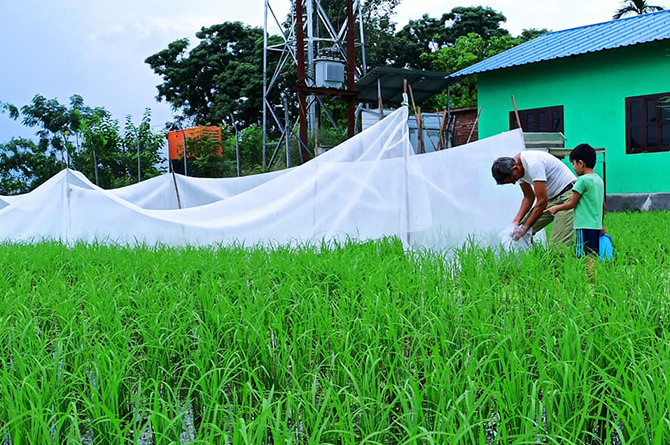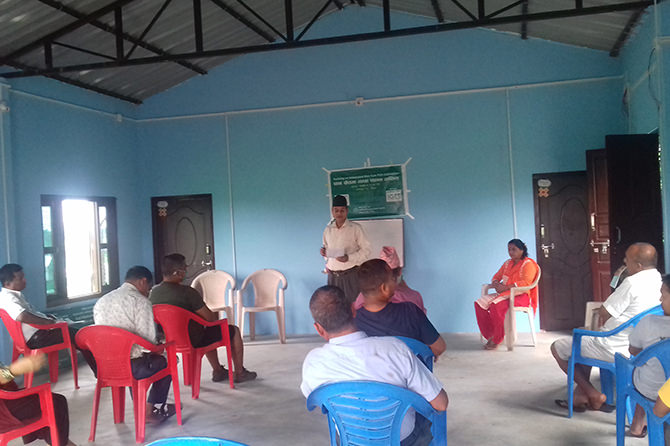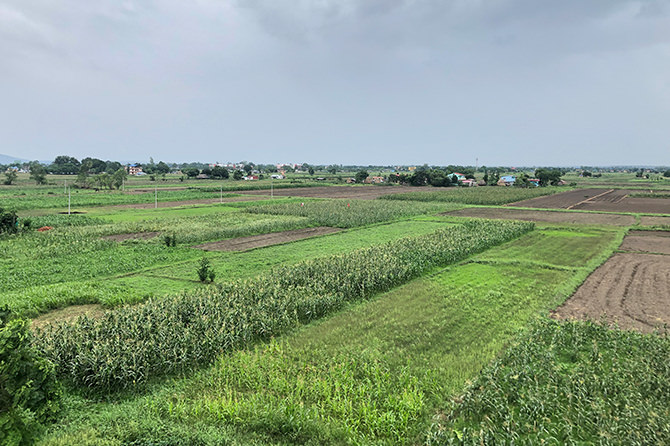2019 NEPAL
Paddy cum Fish Cultivation for Sustainable Livelihood and Biodiversity Conservation
Society of Environment Conservation and Agricultural Research Development (SECARD) Nepal
Research activities
Landscape
Overview
The project site, Chitwan, is one of the districts in Nepal where climatic conditions are favourable for paddy cultivation. Therefore, the main occupation in this area is agriculture. However, land fertility and biodiversity has been degraded due to the excessive use of chemical fertilizers and pesticides.
To restore the fertility and biodiversity of the soil, it was necessary to apply the idea of SEPLS to rebuild the area where people and nature can live in harmony in a sustainable manner. Therefore, this project had the following objectives:
1. Enable methods of organic agriculture, ensuring effective utilisation of available local resources at farm level.
2. Facilitate economic improvement of the community.
3. Demonstrate and document the benefits of polyculture compared to monoculture.
4. Revive indigenous practices and knowledge of fish paddy system.
Hence, we conducted following actitvities:
- Field study of the project area prior to implementation of project
- Training on paddy cum fish cultivation (3 days)
- Support of technical aspect i.e. fish fingerlings, wire, net
- Creating a market chain (farmers and buyer meeting for facilitating exchange
Key achievements
- The application of paddy cum fish cultivation is observed as sustainable and economic where the land could be utilised without affecting the farm’s biodiversity. This practice opens opportunity for the self-employment while increasing resilience to economic crises for small-scale farmers, while increasing the productivity of the soil through nutrient recycling.
Lessons
- Economic yield per unit area of land could be increased without increasing production costs if the integration of farming is successfully done. Fertility and intensity of soil biota always depend on the source of nutrients provided.
- Cooperation with farmers and their willingness were the major factors for the success of the project. The project has given opportunities for women’s empowerment, and made use of local resources in agriculture to minimise any negative impact on biodiversity.
Project location
Organisation

Society of Environment Conservation and Agricultural Research Development (SECARD) Nepal
- Sector
- Non-governmental organisation
- Country
- Nepal
Relevant projects
Projects of the same year
Aichi Biodiversity Targets
Aichi Biodiversity Targets
-
Awareness increased
-
Biodiversity values integrated
-
Sustainable agriculture, aquaculture and forestry
-
Pollution reduced
-
Ecosystems restored and resilience enhanced
-
Traditional knowledge respected and integrated
Sustainable Development Goals
Sustainable Development Goals
-
Zero hunger
-
Climate action


